197 results found for 'Science'. |1|2|3|4|5|6|7|8 | Next | View 100 per page
Low relevance matches: 10 other results may be of interest to you. Show low relevance matches
DNA - The transmission of heritable characteristics from one generation to the next involves DNA and genes ACSSU185 Year 10 Biological Sciences
Evolution - The theory of evolution by natural selection explains the diversity of living things and is supported by a range of scientific evidence ACSSU004 Foundation Earth and Space Sciences
Weather and Climate - Daily and seasonal changes in our environment, including the weather, affect everyday life ACSSU002 Foundation Biological Sciences
Living Things - Living things have basic needs, including food and water ACSSU005 Foundation Physical Sciences
Forces and Moving - The way objects move depends on a variety of factors including their size and shape ACSSU017 Year 1 Biological Sciences
Living Things - Living things have a variety of external features ACSSU019 Year 1 Earth and Space Sciences
Weather and Climate - Observable changes occur in the sky and landscape ACSSU020 Year 1 Physical Sciences
Light and Sound - Light and sound are produced by a range of sources and can be sensed ACSSU030 Year 2 Biological Sciences
Life Cycles - Living things grow, change and have offspring similar to themselves ACSSU031 Year 2 Chemical Sciences
Materials - Different materials can be combined, including by mixing, for a particular purpose ACSSU032 Year 2 Earth and Space Sciences
Water - Earth’s resources, including water, are used in a variety of ways ACSSU033 Year 2 Physical Sciences
Forces and Moving - A push or a pull affects how an object moves or changes shape ACSSU043 Year 5 Biological Sciences
Adaptations - Living things have structural features and adaptations that help them to survive in their environment ACSSU044 Year 3 Biological Sciences
Living Things - Living things can be grouped on the basis of observable features and can be distinguished from nonliving ACSSU046 Year 3 Chemical Sciences
Solids Liquids Gases - A change of state between solid and liquid can be caused by adding or removing heat ACSSU048 Year 3 Earth and Space Sciences
Earth Moon Sun - Earth’s rotation on its axis causes regular changes, including night and day ACSSU049 Year 3 Physical Sciences
Heat - Heat can be produced in many ways and can move from one object to another ACSSU072 Year 4 Physical Sciences
Life Cycles - Living things have life cycles ACSSU073 Year 4 Biological Sciences
Animal Survival - Living things, including plants and animals, depend on each other and the environment to survive ACSSU074 Year 4 Chemical Sciences
Materials - Natural and processed materials have a range of physical properties; These properties can influence their use ACSSU075 Year 4 Earth and Space Sciences
Earth Changes - Sudden geological changes or extreme weather conditions can affect Earth’s surface ACSSU076 Year 4 Physical Sciences
Forces and Moving - Forces can be exerted by one object on another through direct contact or from a distance ACSSU077 Year 5 Chemical Sciences
Solids Liquids Gases - Solids, liquids and gases have different observable properties and behave in different ways ACSSU078 Year 5 Earth and Space Sciences
Earth Moon Sun - The Earth is part of a system of planets orbiting around a star (the sun) ACSSU080 Year 5 Physical Sciences
Light and Sound - Light from a source forms shadows and can be absorbed, reflected and refracted ACSSU094 Year 6 Biological Sciences
Adaptations - The growth and survival of living things are affected by the physical conditions of their environment ACSSU095 Year 6 Chemical Sciences
Chemical Changes - Changes to materials can be reversible, such as melting, freezing, evaporating; or irreversible, such as burning and rusting ACSSU096 Year 6 Earth and Space Sciences
Earth Changes - Sudden geological changes or extreme weather conditions can affect Earth’s surface ACSSU097 Year 6 Physical Sciences
Electrical Circuits - Electrical energy can be transferred and transformed in electrical circuits and can be generated from a range of sources ACSSU111 Year 7 Biological Sciences
Classification - Classification helps organise the diverse group of organisms ACSSU112 Year 7 Biological Sciences
Food webs - Interactions between organisms, including the effects of human activities can be represented by food chains and food webs ACSSU113 Year 7 Chemical Sciences
Separating Mixtures - Mixtures, including solutions, contain a combination of pure substances that can be separated using a range of techniques ACSSU115 Year 7 Earth and Space Sciences
Earth Moon Sun - Predictable phenomena on Earth, including seasons and eclipses, are caused by the relative positions of the sun, Earth and the moon ACSSU116 Year 7 Earth and Space Sciences
Earth Resources - Some of Earth’s resources are renewable, but others are non renewable ACSSU117 Year 7 Physical Sciences
Forces and Machines - Change to an object’s motion is caused by unbalanced forces, including Earth’s gravitational attraction, acting on the object ACSSU149 Year 8 Biological Sciences
Cells - Cells are the basic units of living things and have specialised structures and functions ACSSU150 Year 8 Biological Sciences
Organ Systems - Multi-cellular organisms contain systems of organs that carry out specialised functions that enable them to survive and reproduce ACSSU151 Year 8 Chemical Sciences
Matter and Particles - The properties of the different states of matter can be explained in terms of the motion and arrangement of particles ACSSU152 Year 8 Chemical Sciences
Matter and Particles - Differences between elements, compounds and mixtures can be described at a particle level ACSSU153 Year 8 Earth and Space Sciences
Rocks and Minerals - Sedimentary, igneous and metamorphic rocks contain minerals and are formed by processes that occur within Earth over a variety of timescales ACSSU155 Year 8 Physical Sciences
Energy Forms - Energy appears in different forms, including movement (kinetic energy), heat and potential energy, and energy transformations and transfers cause change within systems ACSSU175 Year 9 Biological Sciences
Organ Systems - Multi-cellular organisms rely on coordinated and interdependent internal systems to respond to changes to their environment ACSSU176 Year 9 Biological Sciences
Ecology - Ecosystems consist of communities of interdependent organisms and abiotic components of the environment; matter and energy flow through these systems ACSSU177 Year 9 Chemical Sciences
Atomic Models - All matter is made of atoms which are composed of protons, neutrons and electrons; natural radioactivity arises from the decay of nuclei in atoms ACSSU178 Year 9 Chemical Sciences
Chemical Reactions - Chemical reactions involve rearranging atoms to form new substances; during a chemical reaction mass is not created or destroyed ACSSU179 Year 9 Chemical Sciences
Chemical Reactions - Chemical reactions, including combustion and the reactions of acids, are important in both non-living and living systems and involve energy transfer ACSSU225 Year 8 Chemical Sciences
Chemical Reactions - Chemical change involves substances reacting to form new substances ACSSU180 Year 9 Earth and Space Sciences
Plate Tectonics - The theory of plate tectonics explains global patterns of geological activity and continental movement ACSSU182 Year 9 Physical Sciences
Energy Transfer - Energy transfer through different mediums can be explained using wave and particle models ACSSU186 Year 10 Chemical Sciences
Periodic table - The atomic structure and properties of elements are used to organise them in the Periodic Table ACSSU187 Year 10 Chemical Sciences
Chemical Reactions - Different types of chemical reactions are used to produce a range of products and can occur at different rates ACSSU188 Year 10 Earth and Space Sciences
Universe - The universe contains features including galaxies, stars and solar systems and the Big Bang theory can be used to explain the origin the universe ACSSU189 Year 10 Earth and Space Sciences
Global Systems - Global systems, including the carbon cycle, rely on interactions involving the biosphere, lithosphere, hydrosphere and atmosphere ACSSU190 Year 10 Physical Sciences
Energy Conservation - Energy conservation in a system can be explained by describing energy transfers and transformations ACSSU211 Year 1 Biological Sciences
Animal Survival - Living things live in different places where their needs are met ACSSU219 Year 6 Physical Sciences
Alternative Energies - Energy from a variety of sources can be used to generate electricity ACSSU229 Year 10 Physical Sciences
Forces and Motion - The motion of objects can be described and predicted using the laws of physics
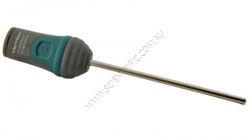




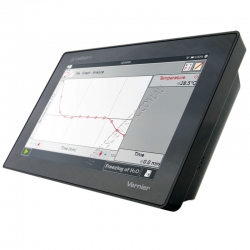
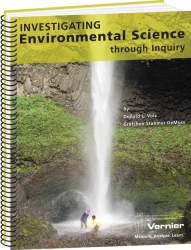

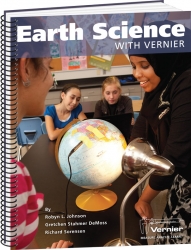

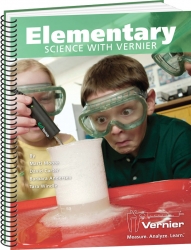

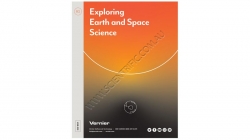
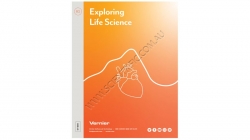
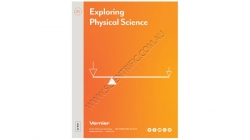
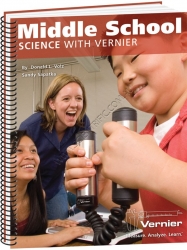

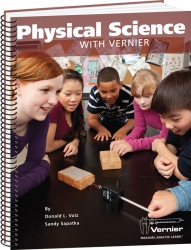

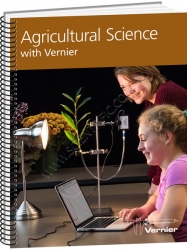
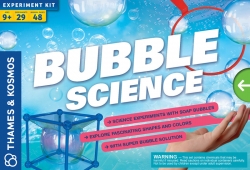
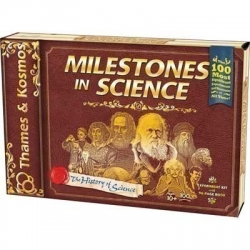
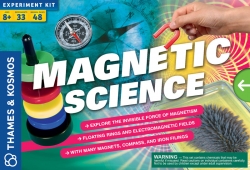
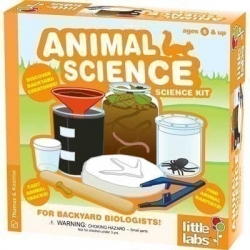
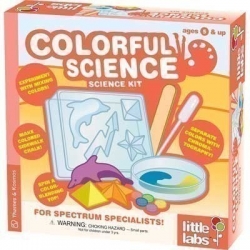
197 results found for 'Science'. |1|2|3|4|5|6|7|8 | Next | View 100 per page
Low relevance matches: 10 other results may be of interest to you. Show low relevance matches
Curriculum resources related to 'Science'
ACSSU184 Year 10 Biological SciencesDNA - The transmission of heritable characteristics from one generation to the next involves DNA and genes ACSSU185 Year 10 Biological Sciences
Evolution - The theory of evolution by natural selection explains the diversity of living things and is supported by a range of scientific evidence ACSSU004 Foundation Earth and Space Sciences
Weather and Climate - Daily and seasonal changes in our environment, including the weather, affect everyday life ACSSU002 Foundation Biological Sciences
Living Things - Living things have basic needs, including food and water ACSSU005 Foundation Physical Sciences
Forces and Moving - The way objects move depends on a variety of factors including their size and shape ACSSU017 Year 1 Biological Sciences
Living Things - Living things have a variety of external features ACSSU019 Year 1 Earth and Space Sciences
Weather and Climate - Observable changes occur in the sky and landscape ACSSU020 Year 1 Physical Sciences
Light and Sound - Light and sound are produced by a range of sources and can be sensed ACSSU030 Year 2 Biological Sciences
Life Cycles - Living things grow, change and have offspring similar to themselves ACSSU031 Year 2 Chemical Sciences
Materials - Different materials can be combined, including by mixing, for a particular purpose ACSSU032 Year 2 Earth and Space Sciences
Water - Earth’s resources, including water, are used in a variety of ways ACSSU033 Year 2 Physical Sciences
Forces and Moving - A push or a pull affects how an object moves or changes shape ACSSU043 Year 5 Biological Sciences
Adaptations - Living things have structural features and adaptations that help them to survive in their environment ACSSU044 Year 3 Biological Sciences
Living Things - Living things can be grouped on the basis of observable features and can be distinguished from nonliving ACSSU046 Year 3 Chemical Sciences
Solids Liquids Gases - A change of state between solid and liquid can be caused by adding or removing heat ACSSU048 Year 3 Earth and Space Sciences
Earth Moon Sun - Earth’s rotation on its axis causes regular changes, including night and day ACSSU049 Year 3 Physical Sciences
Heat - Heat can be produced in many ways and can move from one object to another ACSSU072 Year 4 Physical Sciences
Life Cycles - Living things have life cycles ACSSU073 Year 4 Biological Sciences
Animal Survival - Living things, including plants and animals, depend on each other and the environment to survive ACSSU074 Year 4 Chemical Sciences
Materials - Natural and processed materials have a range of physical properties; These properties can influence their use ACSSU075 Year 4 Earth and Space Sciences
Earth Changes - Sudden geological changes or extreme weather conditions can affect Earth’s surface ACSSU076 Year 4 Physical Sciences
Forces and Moving - Forces can be exerted by one object on another through direct contact or from a distance ACSSU077 Year 5 Chemical Sciences
Solids Liquids Gases - Solids, liquids and gases have different observable properties and behave in different ways ACSSU078 Year 5 Earth and Space Sciences
Earth Moon Sun - The Earth is part of a system of planets orbiting around a star (the sun) ACSSU080 Year 5 Physical Sciences
Light and Sound - Light from a source forms shadows and can be absorbed, reflected and refracted ACSSU094 Year 6 Biological Sciences
Adaptations - The growth and survival of living things are affected by the physical conditions of their environment ACSSU095 Year 6 Chemical Sciences
Chemical Changes - Changes to materials can be reversible, such as melting, freezing, evaporating; or irreversible, such as burning and rusting ACSSU096 Year 6 Earth and Space Sciences
Earth Changes - Sudden geological changes or extreme weather conditions can affect Earth’s surface ACSSU097 Year 6 Physical Sciences
Electrical Circuits - Electrical energy can be transferred and transformed in electrical circuits and can be generated from a range of sources ACSSU111 Year 7 Biological Sciences
Classification - Classification helps organise the diverse group of organisms ACSSU112 Year 7 Biological Sciences
Food webs - Interactions between organisms, including the effects of human activities can be represented by food chains and food webs ACSSU113 Year 7 Chemical Sciences
Separating Mixtures - Mixtures, including solutions, contain a combination of pure substances that can be separated using a range of techniques ACSSU115 Year 7 Earth and Space Sciences
Earth Moon Sun - Predictable phenomena on Earth, including seasons and eclipses, are caused by the relative positions of the sun, Earth and the moon ACSSU116 Year 7 Earth and Space Sciences
Earth Resources - Some of Earth’s resources are renewable, but others are non renewable ACSSU117 Year 7 Physical Sciences
Forces and Machines - Change to an object’s motion is caused by unbalanced forces, including Earth’s gravitational attraction, acting on the object ACSSU149 Year 8 Biological Sciences
Cells - Cells are the basic units of living things and have specialised structures and functions ACSSU150 Year 8 Biological Sciences
Organ Systems - Multi-cellular organisms contain systems of organs that carry out specialised functions that enable them to survive and reproduce ACSSU151 Year 8 Chemical Sciences
Matter and Particles - The properties of the different states of matter can be explained in terms of the motion and arrangement of particles ACSSU152 Year 8 Chemical Sciences
Matter and Particles - Differences between elements, compounds and mixtures can be described at a particle level ACSSU153 Year 8 Earth and Space Sciences
Rocks and Minerals - Sedimentary, igneous and metamorphic rocks contain minerals and are formed by processes that occur within Earth over a variety of timescales ACSSU155 Year 8 Physical Sciences
Energy Forms - Energy appears in different forms, including movement (kinetic energy), heat and potential energy, and energy transformations and transfers cause change within systems ACSSU175 Year 9 Biological Sciences
Organ Systems - Multi-cellular organisms rely on coordinated and interdependent internal systems to respond to changes to their environment ACSSU176 Year 9 Biological Sciences
Ecology - Ecosystems consist of communities of interdependent organisms and abiotic components of the environment; matter and energy flow through these systems ACSSU177 Year 9 Chemical Sciences
Atomic Models - All matter is made of atoms which are composed of protons, neutrons and electrons; natural radioactivity arises from the decay of nuclei in atoms ACSSU178 Year 9 Chemical Sciences
Chemical Reactions - Chemical reactions involve rearranging atoms to form new substances; during a chemical reaction mass is not created or destroyed ACSSU179 Year 9 Chemical Sciences
Chemical Reactions - Chemical reactions, including combustion and the reactions of acids, are important in both non-living and living systems and involve energy transfer ACSSU225 Year 8 Chemical Sciences
Chemical Reactions - Chemical change involves substances reacting to form new substances ACSSU180 Year 9 Earth and Space Sciences
Plate Tectonics - The theory of plate tectonics explains global patterns of geological activity and continental movement ACSSU182 Year 9 Physical Sciences
Energy Transfer - Energy transfer through different mediums can be explained using wave and particle models ACSSU186 Year 10 Chemical Sciences
Periodic table - The atomic structure and properties of elements are used to organise them in the Periodic Table ACSSU187 Year 10 Chemical Sciences
Chemical Reactions - Different types of chemical reactions are used to produce a range of products and can occur at different rates ACSSU188 Year 10 Earth and Space Sciences
Universe - The universe contains features including galaxies, stars and solar systems and the Big Bang theory can be used to explain the origin the universe ACSSU189 Year 10 Earth and Space Sciences
Global Systems - Global systems, including the carbon cycle, rely on interactions involving the biosphere, lithosphere, hydrosphere and atmosphere ACSSU190 Year 10 Physical Sciences
Energy Conservation - Energy conservation in a system can be explained by describing energy transfers and transformations ACSSU211 Year 1 Biological Sciences
Animal Survival - Living things live in different places where their needs are met ACSSU219 Year 6 Physical Sciences
Alternative Energies - Energy from a variety of sources can be used to generate electricity ACSSU229 Year 10 Physical Sciences
Forces and Motion - The motion of objects can be described and predicted using the laws of physics
Products related to 'Science'

Vernier Go Direct Environmental Science Starter Package
VERNIER GO DIRECT ENVIRONMENTAL SCIENCE STARTER PACKAGE
Engage your students in investigating their environment with these Vernier Go Direct sensors. Collect, share and analyze sensor data with Vernier's free Graphical Analysis software. The GA app facilitates student und...
Order code: GDP-EV-ST

Vernier Go Direct Middle School Science Package
VERNIER GO DIRECT MIDDLE SCHOOL SCIENCE PACKAGE
Designed for use by a group of 2-4 students, the Vernier Go Direct Middle School Deluxe Package includes:
• GDX-MD Vernier Go Direct Motion Detector
•
Order code: GDP-MS-DX

Vernier Go Direct Exploring Earth and Space Science Package
VERNIER GO DIRECT EXPLORING EARTH AND SPACE SCIENCE PACKAGE
Explore the Earth science topics of weather, soil and water quality with your Years 4-8 students. Collect, share and analyze sensor data with Vernier's free Graphical Analysis software. The GA app facilitates stu...
Order code: GDP-MS-ESS

Vernier Go Direct Exploring Life Science Package
VERNIER GO DIRECT EXPLORING LIFE SCIENCE PACKAGE
Explore life sciences from yeast to humans with your Years 4-8 Middle School students. Collect, share and analyze sensor data with Vernier's free Graphical Analysis software. The GA app facilitates student understanding wit...
Order code: GDP-MS-LS

Vernier Go Direct Exploring Physical Science Package
VERNIER GO DIRECT EXPLORING PHYSICAL SCIENCE PACKAGE
Explore various physical science topics in basic chemistry and physics from matter and energy to motion and forces with your Years 4-8 Middle School students. Collect, share and analyze sensor data with Vernier's free G...
Order code: GDP-MS-PS

Vernier LabQuest 3 Environmental Science Package
VERNIER LABQUEST 3 ENVIRONMENTAL SCIENCE PACKAGE
Designed for use by a group of 2-4 students, the Vernier LabQuest 3 Environmental Science Package includes:
• LABQ3 Vernier LabQuest 3 Interface
•
Order code: LQ3-EV-DX

Vernier Environmental Science through Inquiry
VERNIER INVESTIGATING ENVIRONMENTAL SCIENCE THROUGH INQUIRY
Investigating Environmental Science through Inquiry is a lab book containing 34 inquiry-based investigations that prompt students’ interest in the environment. Each experiment includes a preliminary activity, tea...
Order code: ESI



Vernier Environmental Science through Inquiry - Electronic Version
VERNIER INVESTIGATING ENVIRONMENTAL SCIENCE THROUGH INQUIRY - ELECTRONIC
Investigating Environmental Science through Inquiry is a lab book containing 34 inquiry-based investigations that prompt students’ interest in the environment. Each experiment includes a preliminary ...
Order code: ESI-E

Earth Science with Vernier
EARTH SCIENCE WITH VERNIER
Earth Science with Vernier is a lab book containing 33 experiments in the subjects of geology, meteorology, hydrology, oceanography, energy, water quality and soil quality.
NOTE
If you have previously purchased a copy of this Vernier ...
Order code: ESV



Earth Science with Vernier - Electronic Version
EARTH SCIENCE WITH VERNIER - ELECTRONIC
Earth Science with Vernier is a lab book containing 33 experiments in the subjects of geology, meteorology, hydrology, oceanography, energy, water quality and soil quality.
NOTE
• When you purchase this electronic book yo...
Order code: ESV-E

Elementary Science with Vernier
ELEMENTARY SCIENCE WITH VERNIER
Elementary Science with Vernier is a lab book containing 43 fun and engaging experiments for students in grades 2-6. Activities investigate the topics of temperature, motion, force, magnetism, light, electricity and pressure. Also included ...
Order code: EWV

Elementary Science with Vernier - Electronic Version
ELEMENTARY SCIENCE WITH VERNIER - ELECTRONIC
Elementary Science with Vernier contains 43 fun and engaging experiments for students in grades 2-6. Activities investigate the topics of temperature, motion, force, magnetism, light, electricity and pressure. Also included are...
Order code: EWV-E

Vernier Exploring Earth and Space Science - E Version
VERNIER EXPLORING EARTH AND SPACE SCIENCE EBOOK
Explore the Earth science topics of weather, soil and water quality with your Years 4-8 Middle School students. Collect, share and analyze sensor data with Vernier's free Graphical Analysis 4 software. The GA4 app facilitate...
Order code: MSB-ESS-E

Vernier Exploring Life Science - E Version
VERNIER EXPLORING LIFE SCIENCE EBOOK
Explore life sciences from yeast to humans with your Years 4-8 Middle School students. Collect, share and analyze sensor data with Vernier's free Graphical Analysis 4 software. The GA4 app facilitates student understanding with real-ti...
Order code: MSB-LS-E

Vernier Exploring Physical Science - E Version
VERNIER PHYSICAL SCIENCE EBOOK
Explore various physical science topics in basic chemistry and physics from matter and energy to motion and forces with your Years 4-8 Middle School students. Collect, share and analyze sensor data with Vernier's free Graphical Analysis 4 so...
Order code: MSB-PS-E

Middle School Science with Vernier
MIDDLE SCHOOL SCIENCE WITH VERNIER
Middle School Science with Vernier was written specifically for students in grades 6-8. It is a lab book containing 38 experiments in earth science, life science and physical science, making use of ten different Vernier middle school sen...
Order code: MSV

Middle School Science with Vernier - Electronic Version
MIDDLE SCHOOL SCIENCE WITH VERNIER
Middle School Science with Vernier was written specifically for students in grades 6-8. It is a lab book containing 38 experiments in earth science, life science and physical science, making use of ten different Vernier middle school sen...
Order code: MSV-E

Physical Science with Vernier
PHYSICAL SCIENCE WITH VERNIER
Physical Science with Vernier is a lab book containing 40 ready-to-use experiments for physical science in grades 6-10 that are perfect for introductory physical science and integrated science classes. Experiments are included for 12 Vernier ...
Order code: PSV

Physical Science with Vernier - Electronic Version
PHYSICAL SCIENCE WITH VERNIER
Physical Science with Vernier is a lab book containing 40 ready-to-use experiments for physical science in grades 6-10 that are perfect for introductory physical science and integrated science classes. Experiments are included for 12 Vernier ...
Order code: PSV-E

Agricultural Science with Vernier - Electronic Version
AGRICULTURAL SCIENCE WITH VERNIER - ELECTRONIC
Agricultural Science with Vernier is a digital lab book containing a collection of 29 experiments that can be useful in teaching agricultural science at the high school or college level. Some experiments are designed to be do...
Order code: AWV-E

Bubble Science (V2.0)
SCIENCE EXPERIMENTS WITH SOAP BUBBLES.
Experiment with fascinating soap bubbles to learn physical science fundamentals in a fun way.
For countless generations people have been captivated by the unique properties of soap bubbles. See for yourself why these elegantly s...
Order code: 665043



Milestones in Science
The 100 Most Significant Experiments and Discoveries of All Time.
Embark on an active research expedition through the history of science and technology with this Thames and Kosmos kit. Learn about famous scientists and inventors, like Archimedes, Copernicus, Einstein, W...
Order code: 625719

Magnetic Science
Explore the Invisible Force of Magnetism
Explore the invisible and amazing power of magnets with 33 engaging experiments and games. This science experiment kit contains many magnets of different shapes and sizes and a variety of other components with which you can exp...
Order code: 665050



Little Labs: Animal Science
Another kit in the Little Labs line from Thames and Kosmos. Learn about animals in your backyard and parks by investigating their natural habitats and tracks. With a 16-page colour guidebook.
For ages 5 and up.
Order code: 606312



Little Labs: Colourful Science
Another great kit in the Little Labs line from Thames and Kosmos. Experiment with additive and subtractive colours, mixing pigments and learn about the colour wheel. Mould your own coloured footpath chalk. With a 20-page colour guidebook.
For ages 5 and up.
Order code: 606411


197 results found for 'Science'. |1|2|3|4|5|6|7|8 | Next | View 100 per page


